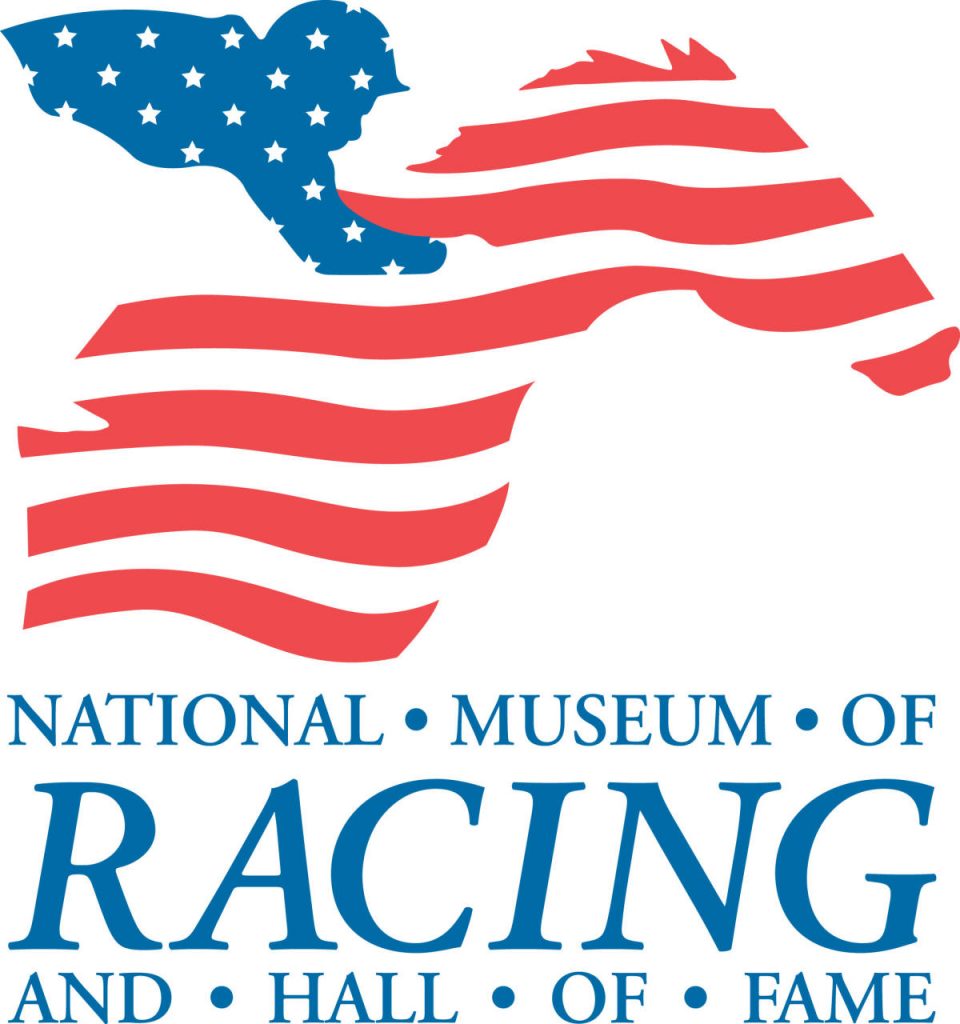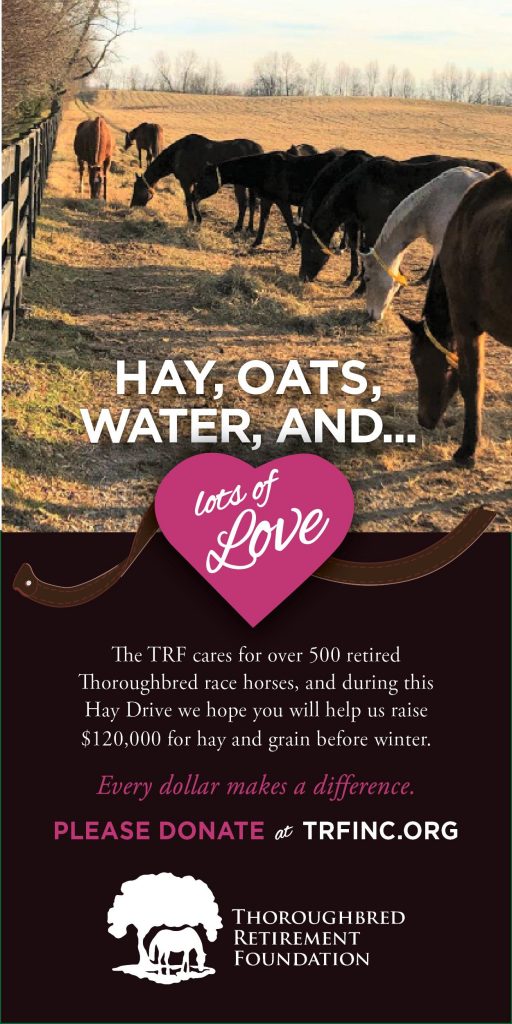
SARATOGA SPRINGS, N.Y. — The National Museum of Racing will induct the 2022 Hall of Fame class on Friday at Fasig-Tipton at 10:30 a.m. Longtime racecaller Tom Durkin will serve as the master of ceremonies. The event is open to the public and free to attend. The ceremony will also be broadcast live on the Museum website at racingmuseum.org.
The 2022 Hall of Fame class is comprised of racehorses Beholder (KY), Hillsdale (IN), Royal Heroine (IRE), and Tepin (KY); trainer Oscar White; and Pillars of the Turf James Cox Brady, Marshall Cassidy, and James Ben Ali Haggin.
Beholder (Henny Hughes—Leslie’s Lady, by Tricky Creek) compiled a record of 18-6-0 from 26 starts and earnings of $6,156,600 while racing from 2012 through 2016. A winner of four Eclipse Awards and three Breeders’ Cup races, Beholder was bred in Kentucky by Clarkland Farm. Purchased by Spendthrift Farm at the 2011 Keeneland September Yearling Sale, Beholder was trained by Hall of Famer Richard Mandella.
Voted the Eclipse Award for Champion 2-Year-Old Filly (2012), Champion
3-Year-Old Filly (2013), and Champion Older Dirt Female (2015 and 2016), Beholder won the Breeders’ Cup Juvenile Fillies (2012) and two editions of the Distaff (2013, 2016), including a sensational victory over champion Songbird by a nose in the 2016 Distaff in her final start.
Beholder is one of only two horses (Hall of Famer Goldikova is the other) with three Breeders’ Cup victories. Overall, Beholder won 13 graded stakes (11 Grade 1s), including a victory against males in the 2015 Pacific Classic. She is the only horse since 1976 to win at least one Grade 1 every year from ages 2 through 6.
Tepin (Bernstein—Life Happened, by Stravinsky) posted a record of 13-5-1 from 23 starts with earnings of $4,437,918 in her career from 2013 through 2016. The Eclipse Award winner for Champion Turf Female in 2015 and 2016, Tepin was bred in Kentucky by Machmer Hall and purchased by Robert E. Masterson at the Fasig-Tipton 2012 Saratoga Select Yearling Sale. She was trained by Hall of Famer Mark Casse.
During her first championship season in 2015, Tepin won four graded stakes, including the Breeders’ Cup Mile against a predominantly male field. She repeated as Champion Turf Female the following year on the strength of a campaign that included Grade 1 wins in the Jenny Wiley Stakes (setting a track record) and Woodbine Mile and a memorable score in the Group 1 Queen Anne Stakes at Royal Ascot in England. Tepin defeated males in both the Woodbine Mile and Queen Anne. She won a total of 11 graded/group stakes victories and won at eight different tracks.
Hillsdale (Take Away—Johann, by Johnstown) is the first horse bred in Indiana to be inducted into the Hall of Fame. Foaled at Helen Kellogg’s Murlogg Farm near Evansville, Hillsdale raced from 1957 through 1959, finishing his career with a record of 23-6-4 from 41 starts and earnings of $646,935 (13th all time at the time of his retirement). Initially trained by Odie Clelland for Kellogg, Hillsdale was purchased privately following his juvenile campaign by Clarence W. Smith, who engaged Martin L. Fallon, Jr., to train. As a 3-year-old, Hillsdale won five stakes races: the Boardwalk Handicap, El Dorado Handicap, Michigan Derby, Malibu, and Will Rogers.
Hillsdale’s best season came as a 4-year-old in 1959, as he won 10 of 13 starts and earned $502,090, which topped the older horse division. He won 10 stakes that year, including seven in a row, and finished second in the other three. Hillsdale won the San Carlos, San Fernando, Santa Anita Maturity, Los Angeles Handicap, Californian, Argonaut Handicap, American Handicap, Hollywood Gold Cup, Sation Handicap, and Aqueduct Handicap. Along the way he defeated the likes of Hall of Famer Round Table and champions Bald Eagle and Jewel’s Reward. Hillsdale won a total of 16 stakes at 11 different tracks.
Royal Heroine (Lypheor—My Sierra Leone, by Relko) was bred in Ireland by Larry Ryan and raced for owner Robert Sangster from 1982 through 1984 in England, France, and the United States. Voted the Eclipse Award for Champion Female Turf Horse in 1984, Royal Heroine concluded her career with a record of 10-4-2 from 21 starts and earnings of $1,229,449. She was trained by Sir Michael Stoute in Europe and John Gosden in America.
Royal Heroine raced 11 times in Europe prior to arriving in America, notably winning the Princess Margaret Stakes at Ascot, the Group 3 Child Stakes at Newmarket, and the Group 2 Prix de l’Opera at Longchamp. In her second start in the United States, Royal Heroine defeated males in a division of the Grade 1 Hollywood Derby in 1983, including four-time Grade 1 winner Interco. Royal Heroine suffered an injury in her next start, the 1984 Santa Ana Handicap, but returned to the races three months later and won back-to-back graded stakes at Hollywood Park, the Inglewood Handicap (vs. males) and Beverly Hills Handicap. In her second start after the Beverly Hills Handicap, Royal Heroine finished second to Hall of Famer John Henry in the Arlington Million.
Continuing to show her affinity for Hollywood Park, Royal Heroine won the inaugural Breeders’ Cup Mile in 1984, defeating nine males in setting a North American record for a mile on turf (1:32.60). Two weeks after the Breeders’ Cup, Royal Heroine won the Grade 1 Matriarch Stakes to conclude her career. Overall, she won eight stakes, seven of which were graded or group stakes, including three Grade 1s.
Oscar White (1908 ̶ 1983), a native of Pittsville, Md., won 706 races — including 104 stakes — with purse earnings of $5.5 million in a career that spanned from 1940 through 1978. Training exclusively for Walter Jeffords, Sr., then later other members of the Jeffords family, White won the Belmont Stakes in 1945 with Pavot and in 1952 with Horse of the Year One Count. White won 12 stakes with Pavot — the Champion 2-Year-Old Male of 1944 — including the Futurity, Grand Union Hotel, Hopeful, Jockey Club Gold Cup, Saratoga Special, and United States Hotel. One Count’s victories included the Jockey Club Gold Cup and Travers, one of White’s three victories in the latter. White also trained the 1951 Champion 3-Year-Old Filly, Kiss Me Kate, one of his three winners in both the Alabama and Delaware Oaks. Overall, White trained 35 stakes-winning horses.
Other top horses trained by White included multiple stakes winners Ace Card, Adile, Loyal Legion, Natchez, Piano Jim, Portsmouth, Post Card, Singing Rain, Snow Goose, and Try Me Now, among others. White won the Maryland Handicap three times; the Delaware Handicap, Empire City Gold Cup, Gazelle Stakes, Jersey Derby, Laurel Handicap, and Saratoga Special twice each; and he earned victories in the Jerome, Manhattan, Maskette, Saratoga Cup, and Whitney, among others. White died in 1983 at the age of 74 in Salisbury, Md.
James Cox Brady (1907 ̶ 1971), a native of West End, N.J., served as chairman of the New York Racing Association for eight years during the 1960s, a period in which NYRA opened a revitalized Belmont Park and significantly refurbished Saratoga Race Course. A Yale graduate, Brady arrived on the racing scene as an owner in 1939 with the first of his many stakes winners, champion War Plumage, winner of the Coaching Club American Oaks and Alabama Stakes. Brady then served in the South Pacific during World War II as a Navy commander, earning six battle stars and the Bronze Star.
Following the war, Brady took an increased interest in racing and served the sport through leadership roles with The Jockey Club (becoming a steward and vice chairman) and the Thoroughbred Racing Associations. He also became a trustee of the National Museum of Racing and Hall of Fame and a founding director of the Monmouth Park Jockey Club. When the Greater New York Racing Association was formed in 1954, Brady was one of the original directors. In 1961, when the organization was known simply as NYRA, Brady was elected chairman. Among the projects he spearheaded was the $30 million revitalization of Belmont.
Brady had considerable success as a breeder and owner. Along with War Plumage, Brady campaigned Casemate (winner of the Metropolitan Handicap among other stakes), Secret Meeting (winner of the Acorn Stakes), Landlocked (winner of the Widener Handicap), Artismo (winner of the Hopeful Stakes), and Upswept (winner of the Comely Stakes), among others. He also had success overseas, winning the Epsom Oaks with Long Look and the Irish Cambridgeshire Handicap with Hibernian. From 1938 through 1970, Brady’s horses won 234 races with purse earnings of $2,042,437. Brady was the Thoroughbred Club of America’s Honored Guest in 1970. He died the following year at age 63 in Summit, N.J.
Marshall Cassidy (1892 ̶ 1968) was born in Washington, D.C., and grew up exercising both flat runners and steeplechasers. He went on to ride in amateur races in New York, Maryland, and Mexico. Son of Mars Cassidy, a starter in New York for a quarter-century, Cassidy is credited with a number of innovations that benefited racing, including devising the modern stall-style starting gate and perfecting the photo-finish camera system. He later became director of racing for the New York Racing Association from 1963 through 1968 and served as executive secretary of The Jockey Club.
In 60 years in the sport, Cassidy also served as a hot-walker, groom, blacksmith, patrol judge, and steward. He was honored by the Horsemen’s Benevolent and Protective Association at its 1955 national convention for his contributions to racing. Along with the starting gate and photo-finish camera, some of Cassidy’s other significant contributions to the sport included inventing the electric timer; developing the film patrol for stewards to evaluate inquiries and foul claims; introducing saliva testing of horses and pre-race veterinary exams; starting The Jockey Club’s school for race officials; and founding The Jockey Club Round Table Conference, held each August at Saratoga for racing leaders to exchange views on matters pertaining to racing and breeding. Cassidy was the Thoroughbred Club of America’s Honored Guest in 1957. He died in 1968 at the age of 76 in Glen Cove, N.Y. Cassidy’s grandson, also named Marshall Cassidy, became a renowned track announcer and racing official.
James Ben Ali Haggin (1822 ̶ 1914) was born in Harrodsburg, Ky., and made a fortune in California in the aftermath of the Gold Rush. An attorney and rancher by trade, Haggin invested in a mining company that developed into one of the largest in the world and included operations in California, Montana, Nevada, South Dakota, and Utah. It was estimated that Haggin and his partners controlled 80 percent of the world’s copper supply at one time. By 1907, it was reported that the only men in the country wealthier than Haggin were John D. Rockefeller and Andrew Carnegie.
In 1873, Haggin established a thoroughbred breeding center on Rancho del Paso near Sacramento. By the 1880s, the ranch was known as the world’s largest thoroughbred nursery and Haggin was campaigning several prominent racers, including future Hall of Fame members Firenze and Salvator. Both horses surpassed $100,000 in career earnings, an extraordinary sum for the time. Firenze won 47 races and was in the money 77 times in 82 career starts. Salvator, meanwhile, won 16 of 19 career starts and is retrospectively regarded as the Horse of the Year for 1889 and 1890.
Haggin raced primarily on the West Coast until the mid-1880s, when he established a stable in New York. In 1885, Haggin won the Belmont Stakes with Tyrant and the following year won the Kentucky Derby with Ben Ali (named for his son). In 1897, Haggin began to concentrate the bulk of his breeding operation in Kentucky with the acquisition of Elmendorf Farm. Haggin expanded the property significantly with purchases of surrounding parcels of land and at one point owned more than 8,700 acres in Central Kentucky. He purchased many quality broodmares in America, including future Hall of Famer Miss Woodford, and also imported stallions and mares from England, Ireland, and Australia.
Haggin bred Preakness Stakes winners Old England (1902), Cairngorm (1905), and Rhine Maiden (1915); Belmont Stakes winners Comanche (1893) and Africander; and Kentucky Derby winner Stone Street (1908). It was reported that Haggin owned 562 broodmares in 1903 and at times had more than 1,000 horses at Elmendorf. Haggin significantly reduced his racing stable in the 1890s to focus on his breeding interests, but he won the Travers in 1903 with the filly Ada Nay. Haggin died in 1914 at the age of 91 in Newport, R.I.
Hall of Fame autograph signing highlights Saturday Morning Social
Several members of the Hall of Fame will take place in a special autograph signing at the Museum on Saturday from 10 a.m. to 11 a.m. The following Hall of Fame members are scheduled to participate (subject to change): Braulio Baeza, Mark Casse, Ramon Dominguez, Janet Elliot, Earlie Fires, Sandy Hawley, Richard Mandella, Jose Santos, Gary Stevens, and Nick Zito.
For $25, fans will receive a commemorative 2022 Hall of Fame induction weekend poster for the Hall of Fame members to sign. There will only be 100 posters for this event and they are available on a first-come, first served basis. Admission to the Museum will be free from 9 a.m. to 11 a.m.
The Saturday Morning Social will also include a handicapping seminar with Mike Beer from Daily Racing Form at 10 a.m. in the Hall of Fame.
For more information about the National Museum of Racing and Hall of Fame, including upcoming events, please visit www.racingmuseum.org or call (518) 584-0400.




